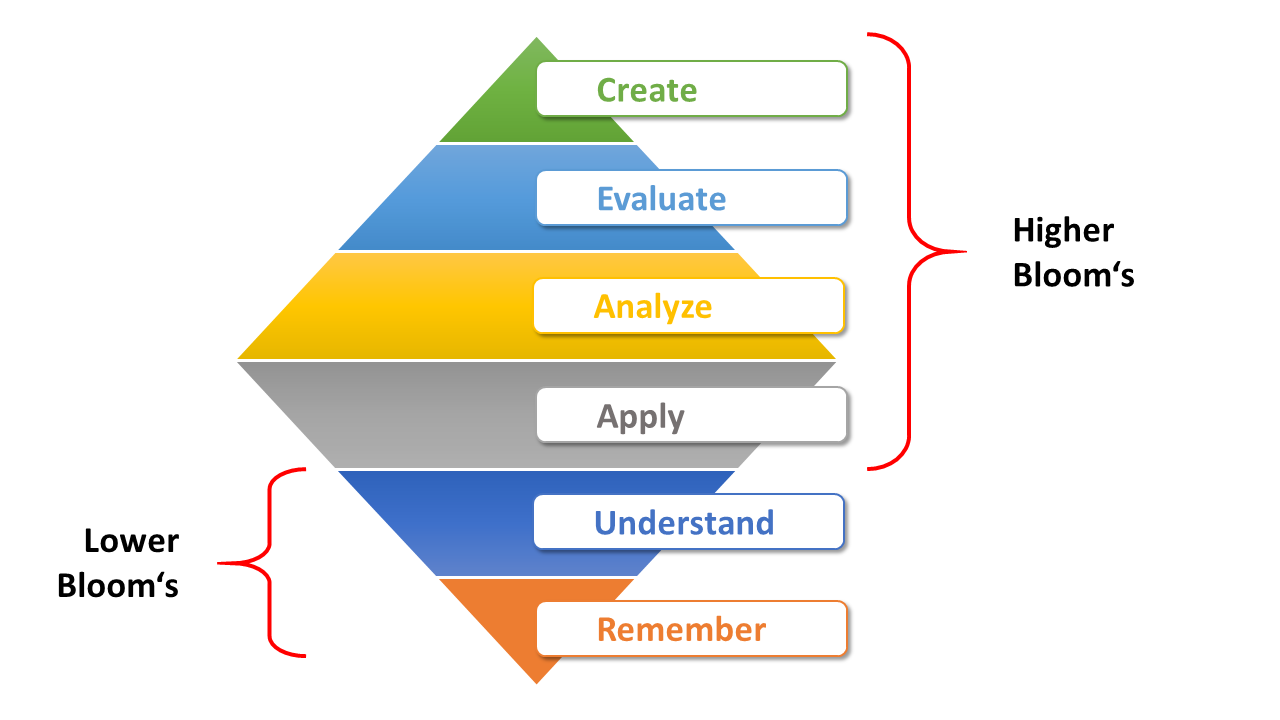 Benjamin Bloom developed his taxonomy 1956. This sounds really old – like an ancient pedagogical issue. Within the last 50 years Blooms taxonomy has been several times revised and brought to a “modern outfit”. Therefore, it is still valid today. Benjamin Bloom (February 21, 1913 – September 13, 1999) was an American educational psychologist who made contributions to the classification of educational objectives and to the theory of mastery learning. He is particularly noted for leading educational psychologists to develop the comprehensive system of describing and assessing educational outcomes in the mid-19501.
Benjamin Bloom developed his taxonomy 1956. This sounds really old – like an ancient pedagogical issue. Within the last 50 years Blooms taxonomy has been several times revised and brought to a “modern outfit”. Therefore, it is still valid today. Benjamin Bloom (February 21, 1913 – September 13, 1999) was an American educational psychologist who made contributions to the classification of educational objectives and to the theory of mastery learning. He is particularly noted for leading educational psychologists to develop the comprehensive system of describing and assessing educational outcomes in the mid-19501.
What is Bloom’s taxonomy?
It is a classification to express and distinguish different levels of human cognition. You also can name it a hierarchy of learning objectives. The six levels created by Bloom are (at today’s used terms expressed with activity vocabulary): remembering, understanding, applying, analyzing, evaluating, and creating. These levels also describe the level of the learning outcome.

Graphic: The graphic represents a presentation of Bloom’s taxonomy, which is shaped as it is currently used in Flipped Learning 3.0.
Here an example: Remembering is the lowest level in the learning process. You are learning a language and you learned some new vocabulary. It is not so difficult to remember these words. However, the correct use of them in a sentence takes bigger effort and represents a higher level in the learning process (namely applying).
The so-called “pre-learning” addresses the lower Bloom’s and means the preparation of essentials that can be learned easily because they do not need complex explanations.
For example: To get your driving license you need to know the traffic signs. These are simple patterns and you can simply learn to recognize them (This is a kind of pattern matching). It is not necessary to understand anything – you must only remember the pattern and know their name.
In the driver’s school you learn to apply the meaning of the traffic signs (this is a higher level).
Why is this not a pyramid (as often seen in the internet)?
The reason for its presentation is, that the graphic also shows the importance. The most efficient levels in learning are applying, analyzing, and evaluating. These activities should be done very intensively. The highest levels like evaluating and creating are also important but will not be evident in the learning of training as intensively as applying and analyzing.
Hint: The higher Bloom’s are often used for formative evaluation.
Importance for Flipped Learning 3.0
In Flipped Learning, the individual space (in which you are learning alone most of the time) is used to create the necessary knowledge for the following activities. The learning focuses on the levels of remembering and understanding. So, you are well-prepared for the next step, the group space learning.
You may watch this video to go deeper into this issue:
Source: https://www.youtube.com/watch?v=-hwu3xqbMKw&feature=emb_logo
1 Source: Wikipedia (en.wikipedia.org/wiki/Benjamin_Bloom)


